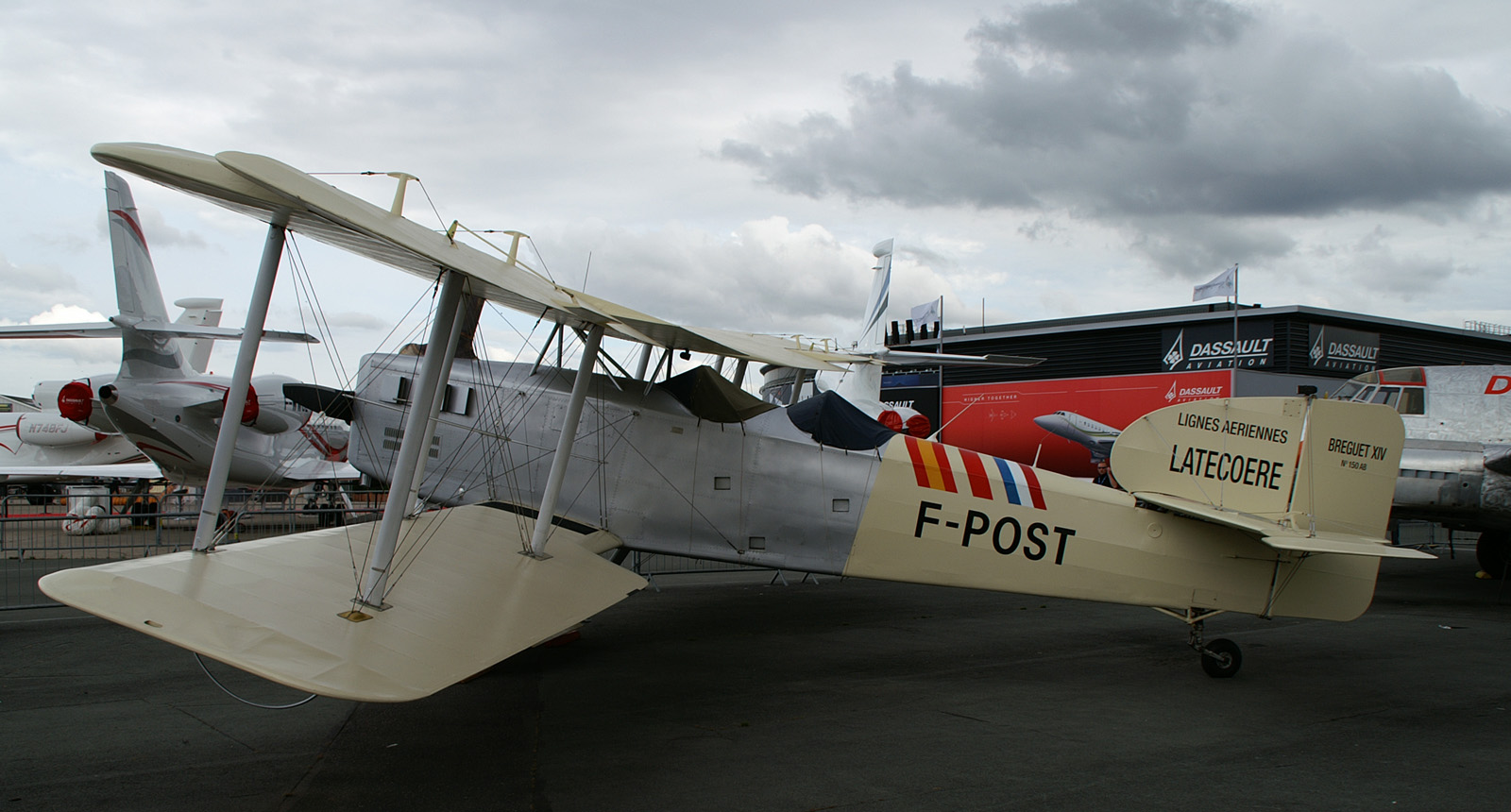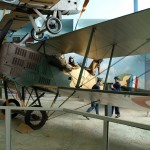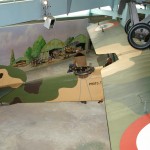
The Breguet 14 was a French biplane bomber and reconnaissance aircraft of World War I. The Breguet 14 is often considered one of the best aircraft of the war.
Developing nation: France.
Manufacturer/designer: Louis Breguet.
Type aircraft: bomber and reconnaissance aircraft.
First flight: November 21, 1916.
Produced: 1917 – 1928.
Built: ca 7,800
Used throughout the war, the innovative Bréguet Br.14 was a highly successful biplane used by the French, Belgian and American air services. Designed by Louis Bréguet in 1916, it was one of the first aircraft constructed with duralumin in the airframe. Rugged and versatile, it was mass produced in several variations, including a seaplane model. Before the end of the war, the Bréguet Br.14 saw service as a reconnaissance aircraft, a day/night bomber and an air ambulance.
After the war, ex-military aircraft were converted to carry mail, while others were adapted to the passenger role possibly being the first French airliner. Some conversions had a 2 seat cabin behind the pilot, termed The Limosine, while others sported a 4 seat glazed compartment in a position between the wings and flown from the rear cockpit. Most of the conversions were undertaken by the Societe Industrielle d’Aviation Latecoere and were used by the French postal service and mail service in Brazil, Uruguay and Argentina.
Variants
Brequet Bre.14 – main series designations
Brequet Bre.14A2 – two seat artillery observation
Brequet Bre.14B2 – two seat bomber
Brequet Bre.14B1 – single seat bomber
Brequet Bre.14S – ambulance
Brequet Bre.14 TOE – post war model used mainly on colonial front
Military operators
- Belgium – Air Force
Brazil – Air Force - China – Air Force
- Czechoslovakia – Air Force
- Denmark – Air Force
- El Salvador – Air Force
- Finland – Air Force
- France – Air Force
- France – Navy
- Greece – Air Force
- Iran (Persia) – Air Force
- Italy – Air Force
- Japan – Army Air Force
- Lithuania – Air Force
- Manchuria – Air Force
- Poland – Air Force
- Portugal – Air Force
- Romania – Air Force
- Spain – Air Force
- Sweden – Air Force
- Thailand (Siam) – Air Force
- Turkey – Air Force
- Uruguay – Air Force
- USA – Army Air Service
- USSR – Air Force
- Yugoslavia (Serbia) – Air Force
General characteristics
- Crew: Two
- Length: 8.87 m (29 ft 1 in)
- Wingspan: 14.36 m (47 ft 1 in)
- Height: 3.30 m (10 ft 10 in)
- Wing area: 47.50 m² (511 ft²)
- Empty weight: 1,010 kg (2,227 lb)
- Max. takeoff weight: 1,536 kg (3,386 lb)
- Powerplant: 1 × Renault 12Fe, 224 kW (300 hp)
Performance
- Maximum speed: 175 km/h (95 kn, 109 mph)
- Range: 900 km (486 nmi, 560 mi)
- Service ceiling: 6,000 m (19,685 ft)
- Rate of climb: 292 m/min (960 ft/min)
- Wing loading: 32 kg/m² (at max. takeoff weight) (6.6 lb/ft²)
- Power/mass: 145 W/kg (at max. takeoff weight) (0.09 hp/lb)
Armament
- Guns: 1 × fixed 7.7 mm (.303 in) Vickers machine gun
- 2 × flexible 7.7 mm (.303 in) Lewis Gun for observer
- Bombs: 300 kg (660 lb)
All pictures courtesy of Zijde Aviation Photo and Publishing, Rob Vogelaar.

